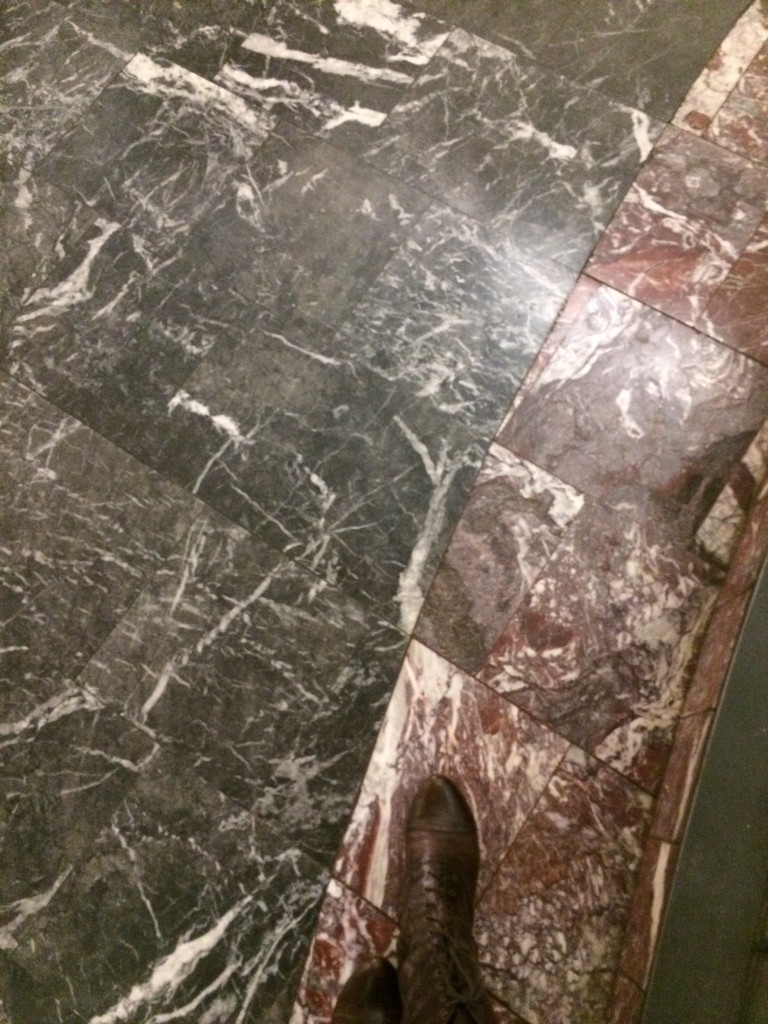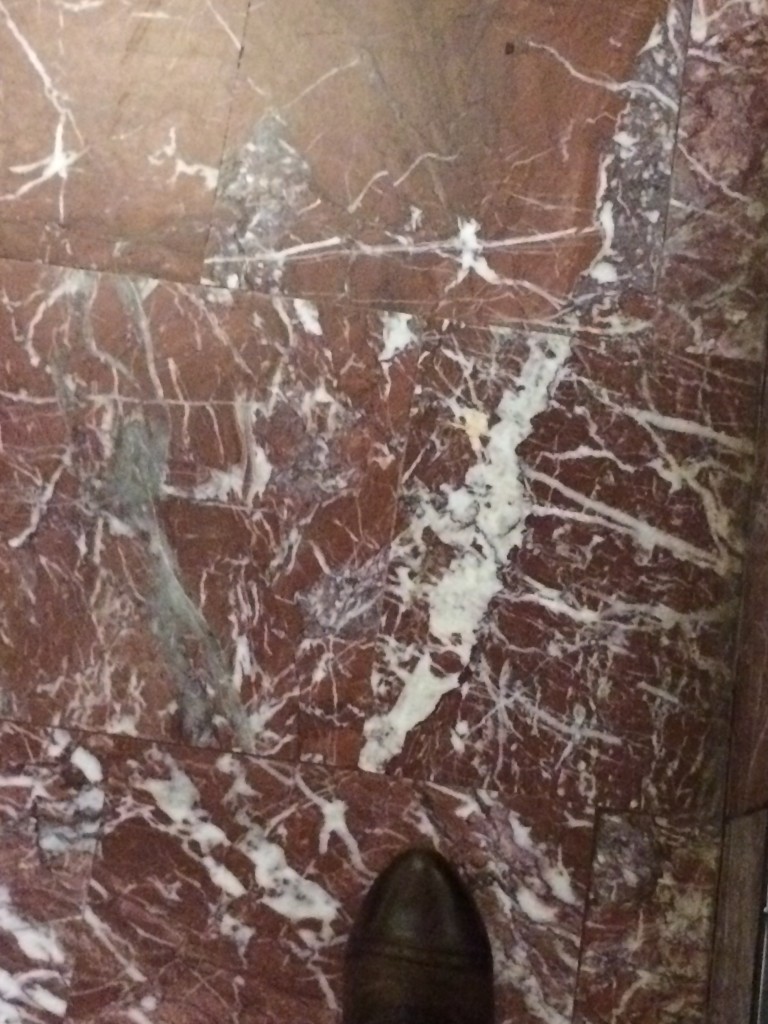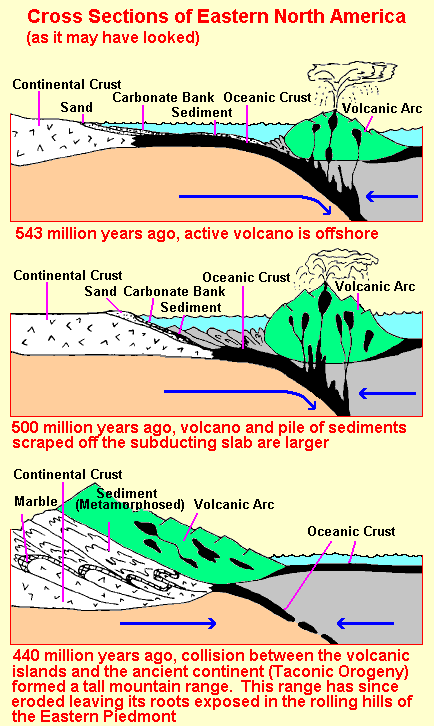13 June 2014
Building DC: Union Station’s marble floors
Posted by Jessica Ball
 Whenever I go to a hearing on the Senate side of Capitol Hill, I usually arrive via Union Station. It’s a really beautiful building and one of the few grand train stations left in the country, and I’m always impressed by the architecture there. According to the architectural history, it was designed in the Beaux-Arts Style and meant to mimic the Roman Baths of Caraculla and Diocletian. It was completed in 1907, and then restored from 1986-1988 (and it’s actually being worked on right now, too). But wait! There’s geology involved with all that history.
Whenever I go to a hearing on the Senate side of Capitol Hill, I usually arrive via Union Station. It’s a really beautiful building and one of the few grand train stations left in the country, and I’m always impressed by the architecture there. According to the architectural history, it was designed in the Beaux-Arts Style and meant to mimic the Roman Baths of Caraculla and Diocletian. It was completed in 1907, and then restored from 1986-1988 (and it’s actually being worked on right now, too). But wait! There’s geology involved with all that history.

Ticket counters inside the station with the beautiful coffered ceiling overhead
Inside the station, one of the most striking features aside from the statuary and the gilded ceilings (yes, real gilding) are the floors.

Black and red marble (with boots for scale)
They’re made out of really beautiful black and red marble. Now, in DC you see a lot of marble (or a lot of Tennessee Limestone that mistakenly gets called marble, for whatever reason). But Union Station is the only place I’ve ever seen so much of the red kind. It’s particularly striking on the stairs that link the three levels of the station, so much so that I’m always sidestepping to avoid someone stopping to take a photo. (Obviously I am guilty of this myself, but it’s hard not to – the stairs are really striking!)

The beautiful spiral stairs, where everyone stops to take photos, and with good reason!
All of it is full of what appear to be calcite- or quartz-filled veins, some of them offset by tiny faults (and some filling what might be tension gashes).

Veins in the marble. Note the faulting (maybe right-lateral?) next to my toes.
It took a lot of digging to figure out where the marble came from, but my best guess is that it’s from a quarry in Bethel, Vermont – at least that’s what this old newspaper clipping says about the “marble inlays” on the floors. Bethel seems to be a good spot for white marble, but it’s hard to find much about other colors, at least online. The only mention of red marble I’ve been able to find is on this page, which has a postcard showing an “Oriental Red Marble quarry” in Swanton, Vermont, run by the Vermont Marble Company. (Marble is a big thing in Vermont; here’s an entire guidebook on the Vermont “Marble Trail”.) One of the architectural tidbits on the history page says that
“Over 2.5 acres of marble were used in the restoration, replicating the original. In the 1950’s, the white marble squares had worn down below the level of the pink squares, causing a safety problem, and the marble was replaced in its entirety with terrazzo, a material popular at that time. The pink marble used in the 1988 restoration came from the same quarry used in the original construction.”
As for the geology? Well, according to the Vermont Geological Survey,
“Much of the Vermont marble industry is located within the Champlain Valley and Vermont Valley physiographic province. The Valleys are composed of the shallow marine Cambro-Ordovician shelf sequence, deformed by Taconian folding and faulting. Carbonate sediments have been altered into low-grade marbles, and tight folding has thickened the limbs of associated folds, significantly increasing the size of the ore deposits.”
Basically, what we had was a shallow sea (where you get lots of carbonate minerals depositing) that was then metamorphosed in the collision of a volcanic island arc with North America around 450 million years ago (the Ordovician). Here’s a nice summary figure from the USGS:  The marbles formed from the low-grade metamorphism of the “carbonate banks” that built up in the shallow seas. I would guess that the red color of the marbles in Union Station is from iron oxide, although I’m not a metamorphic petrologist and it might be something else. There you have it: Union Station, built to resemble a 2000-year-old Roman bathhouse and floored with marble that formed in a collision of a volcanic island arc 450 million years ago. That’s a lot of history!
The marbles formed from the low-grade metamorphism of the “carbonate banks” that built up in the shallow seas. I would guess that the red color of the marbles in Union Station is from iron oxide, although I’m not a metamorphic petrologist and it might be something else. There you have it: Union Station, built to resemble a 2000-year-old Roman bathhouse and floored with marble that formed in a collision of a volcanic island arc 450 million years ago. That’s a lot of history!


 Jessica Ball is a volcanologist at the U.S. Geological Survey, researching volcanic hydrothermal systems and stability, and doing science communication for the California Volcano Observatory. She previously worked at the Geological Society of America's Washington DC Policy Office, learning about the intersection of Earth science and legislative affairs. Her Mendenhall postdoc and PhD focused on how water affects the stability of volcanoes, and involved both field investigations and numerical modeling applications. Her blogging covers a range of topics, from her experiences in academic geosciences to science outreach and communication to her field and lab work in volcanology.
Jessica Ball is a volcanologist at the U.S. Geological Survey, researching volcanic hydrothermal systems and stability, and doing science communication for the California Volcano Observatory. She previously worked at the Geological Society of America's Washington DC Policy Office, learning about the intersection of Earth science and legislative affairs. Her Mendenhall postdoc and PhD focused on how water affects the stability of volcanoes, and involved both field investigations and numerical modeling applications. Her blogging covers a range of topics, from her experiences in academic geosciences to science outreach and communication to her field and lab work in volcanology.
Hello Ms. Ball, I read your article on union station marble. I am in possession of the marble stairs on both sides of the now gone “Center Cafe” which was in the main hall for 30 years.This is the same red marble used throughout the station. If you know anyone who who would be interested in purchasing any or all of these steps please share my email with them. Thanks
[…] a lot of information, but it seems that this marble likely came from Vermont (See this blog here: https://blogs.agu.org/magmacumlaude/2014/06/13/building-dc-union-station-just-the-floors/), which was created over 400 million years ago, when limestone produced from a shallow sea collided […]
Hello my name is Holly and I work for a moving company. We moved a lady that had a table with one of these marble tiles set down into the table. Somehow it has gotten missed placed. This marble tile came from union station when it was being remodeled. I’m on the search for one of these tiles.